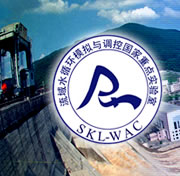《Agricultural Water Management》刊登“根据遥感影像估算Thukela河上游流域不同土地利用类型的蒸发量”
作者:M.V.Kongo, G.W.P.Jewitt, S.A.Lorentz
刊物:《Agricultural Water Management》,2011年,98卷第11期,1727-1739页
关键词:土地利用;用水;遥感;MODIS; SEBAL; Thukela
摘要:本文利用民用版陆面能量平衡算法(SEBAL)和中分辨率成像光谱仪卫星(MODIS)的影像对Thukela河上游流域的不同土地利用类型的蒸发量情况进行了估算。对2005年6月至2006年9月这一时期内的28张影像进行了分析。利用2000年南非土地利用图计算了Thukela河上游13个四级流域中不同土地利用类型的蒸发水利用情况。结果表明,从某四级流域上空卫星上的大孔径闪烁仪获得的地面实测数据与SEBAL估算的总蒸发量之间有很好的相关性。观测数据表明,产生较大体积蒸发水量的土地利用类型为森林(即桉树林、松树林、混合林种及本地林种)、“水体”(即供水水库和农田水库)和湿地。在夏季(湿润),所有土地利用类型的蒸发率都很高,桉树林的蒸发率可从冬季(干燥)的每天3mm变动到夏季的每天5mm。裸露岩石和侵蚀土壤的蒸发率最低,每天只有不到1mm。在干燥的冬季,“水体”的蒸发率相对而言比较低,这是由平均混合像元(湿和干)覆盖区域的变化以及这种变化无法从1 km × 1 km低分辨率的MODIS影像捕捉造成的。因此,本文探索采用遥感技术、低分辨率卫星影像,对Thukela河流域不同土地利用类型的用水量进行量化,并取得了满意的结果。
Evaporative water use of different land uses in the upper-Thukela river basin assessed from satellite imagery
Authors: M.V.Kongo, G.W.P.Jewitt, S.A.Lorentz
Journal: Agricultural Water Management, Volume 98, 2011, Issue11, pages 1727-1739
Key words: Land use; Water use; Remote sensing; MODIS; SEBAL; Thukela
Abstract: Evaporative water use of various land use classes in the upper-Thukela river basin was estimated using the public domain version of the Surface Energy Balance Algorithm for Land (SEBAL) and Moderate Resolution Imaging Spectroradiometer (MODIS) satellite images. Twenty eight images were analyzed covering the period between June 2005 and September 2006. The South Africa land use map developed in the year 2000 was used to compute the evaporative water use of the various land uses in 13 Quaternary Catchments (QCs) in the upper-Thukela river basin. There was a good correlation between the SEBAL estimates of total evaporation and ground measurements from a Large Aperture Scintillometer installed at a site in one of the QCs in the study area. It was observed that the land uses that generated relatively large volumes of evaporative water were forestry (i.e. Eucalyptus, Pine, mixed species & indigenous), “water bodies” (i.e. water supply reservoirs, farm reservoirs) and wetlands. Total evaporation rates for all land use classes were high during the summer season (wet), with Eucalyptus ranging between 3 mm d−1 during the winter season (dry) and about 5 mm d−1 during the summer season. Bare rocks and eroded soil surface land use class had the least evaporative water use i.e., less than 1 mm d−1. The relatively low evaporation rates over “water bodies” during the dry winter season could be attributed to the averaging of mixed pixels (wet and dry) due to change in areal coverage and which could not be captured in the 1 km × 1 km low resolution MODIS images. Thus, the potential for applying remote sensing techniques, using low resolution satellite images, to quantify water use by various land uses in the Thukela river basin was explored with promising results.
原文链接:http://www.sciencedirect.com/science/article/pii/S0378377410002027
翻译:杨立疆;
审核:翟家齐

